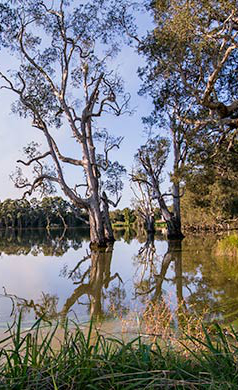Swamp study claims colliery risk
 A hydrogeology report suggests the expansion of the Springvale colliery in NSW could destroy nearby swamplands.
A hydrogeology report suggests the expansion of the Springvale colliery in NSW could destroy nearby swamplands.
The report obtained by the ABC alleges that the expansion of long wall mining at the Springvale colliery near Lithgow “allows for 29 nationally endangered swamps to be undermined”, according to the Colong Foundation for Wilderness.
The mine is operated by Thai company Centennial Coal and employs 300 workers, making it one of the region's biggest employers.
It is also the sole supplier of coal to the Mount Piper power station.
Approval was granted late last year for another 13 years of long wall mining, after a five year assessment process.
The independent report by hydrogeologists Steven Pells and Dr Philip Pells, commissioned by the Colong Foundation for Wilderness, suggests the expansion would smash native species.
“The Newnes Plateau shrub swamps are listed nationally as an endangered ecological community under Federal environmental law and that happens very rarely,” Mr Muir told reporters.
Mr Muir accused Centennial Coal of not being “at all accurate in its description about the damage that has occurred, already there are swamps that are drying out”.
“You can avoid the swamps and keep mining and that's what they need to do.”
Centennial Coal has denied claims that the undermined swamps are drying, saying there would be only “minimal impact” on the surface.
“When we looked at the economic viability to not mine at all underneath those swamps, basically it eroded the economic viability of the mine,” said Centennial Coal's Executive General Manager of External Affairs, Katie Brassil.
“We actually narrowed the long wall, increased the width of the barriers, at significant economic cost.”
But as the experts’ concluded; “There's a lot of uncertainty, it's very difficult to predict the nature of cracking and where it's going to occur”.
“The impacts to the swamp from subsurface cracking are even more difficult to know, because the nature of detailed groundwater flow paths, and the extent and nature of its important shale layers, is unknown, and the presence of cracking is not adequately measurable.”
It said the reduced groundwater and surface water runoff “will slowly change the swamp. It will become statistically drier, which ultimately will be reflected in a changed swamp ecology”.
“The most likely and the more disappointing scenario is in fact the swamps will be compromised subtly, in some locations, possibly all of them,” Mr Pells told the ABC.
The report also warned of disastrous impacts “such as sudden slumping/draining of the swamp from severe cracking”, as happened at the East Wolgan swamp above the Springvale coal mine seven years ago.
“Swamps depend on peat accumulating over years and years and that was flushed away down the hole,” Mr Pells said.
Centennial Coal was charged $1.5 million in 2010, ordered to pay for research and remediation of an area that slumped due to waste water discharge from the Springvale mine.
“What we have done is actively remediate that swamp and that remediation is in an advanced stage,” Ms Brassil said.
Centennial Coal says it has the largest array of monitoring sensors in the region, and will do whatever it can to protect the jobs of its 300 local workers.
The environmentalists say Centennial’s ambition will bring water loss to swamps and damage native populations among its negative impacts.







 Print
Print